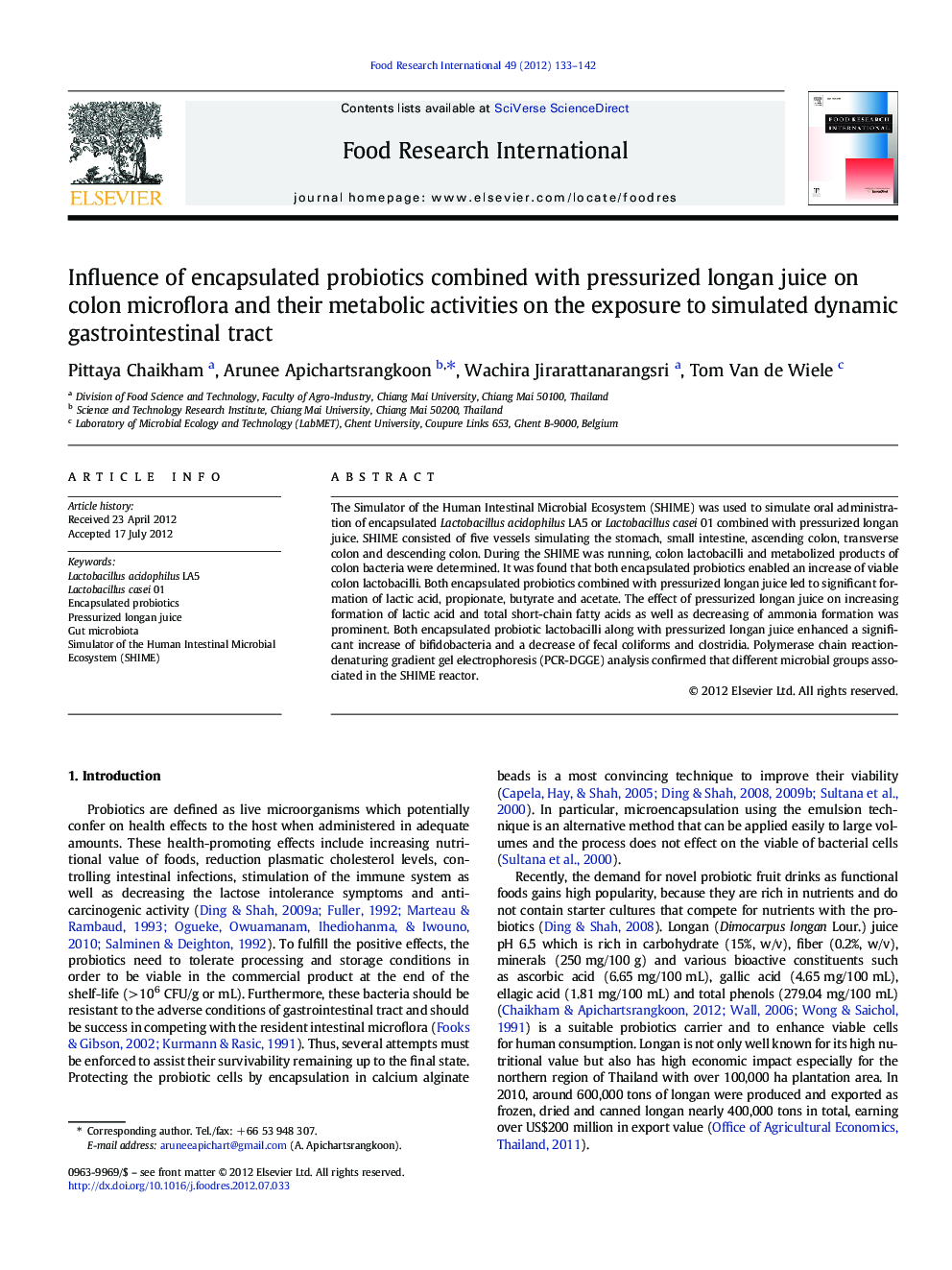| Article ID | Journal | Published Year | Pages | File Type |
|---|---|---|---|---|
| 6399036 | Food Research International | 2012 | 10 Pages |
The Simulator of the Human Intestinal Microbial Ecosystem (SHIME) was used to simulate oral administration of encapsulated Lactobacillus acidophilus LA5 or Lactobacillus casei 01 combined with pressurized longan juice. SHIME consisted of five vessels simulating the stomach, small intestine, ascending colon, transverse colon and descending colon. During the SHIME was running, colon lactobacilli and metabolized products of colon bacteria were determined. It was found that both encapsulated probiotics enabled an increase of viable colon lactobacilli. Both encapsulated probiotics combined with pressurized longan juice led to significant formation of lactic acid, propionate, butyrate and acetate. The effect of pressurized longan juice on increasing formation of lactic acid and total short-chain fatty acids as well as decreasing of ammonia formation was prominent. Both encapsulated probiotic lactobacilli along with pressurized longan juice enhanced a significant increase of bifidobacteria and a decrease of fecal coliforms and clostridia. Polymerase chain reaction-denaturing gradient gel electrophoresis (PCR-DGGE) analysis confirmed that different microbial groups associated in the SHIME reactor.
⺠Encapsulated probiotics led to increasing colon lactobacilli community. ⺠Probiotics led to formation of lactic acid and short chain fatty acids (SCFA). ⺠Pressurized longan juice increased lactic acid and SCFA but decreased ammonia. ⺠Probiotics in longan juice increased beneficial but decreased pathogenic bacteria.
